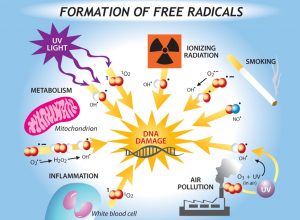
by Dr. Oler, ND | Oct 21, 2021 | Allergies, Bone Health, Depression, Immune System, Inflammation, Men's Health, Mineral Absorption, Nutrition, Supplements, Women's Health
Vitamin D has been in the news a lot lately. In actuality, Vitamin D is in the news all the time, as research is finding that a large portion of the population needs to supplement vitamin D in order to achieve ideal levels. However, every person has unique needs for vitamin D; in this post, we’ll show you how you can determine the exact amount of vitamin D that you need.
(more…)
by Dr. Oler, ND | Apr 7, 2020 | Health and Wellness, Immune System, Inflammation, Insomnia |
Melatonin has well known anti-inflammatory and anti-oxidative effects; it has also been shown to be protective against the acute lung injury (ALI) and acute respiratory distress syndrome (ARDS) caused by viral and other pathogens. There is significant data showing that melatonin limits virus-related diseases and would also likely be beneficial in COVID-19 patients.
(more…)

by Dr. Oler, ND | Dec 21, 2017 | Bone Health, Eating Naturally, Health and Wellness, Inflammation, Nutrition
Antioxidants are everywhere in nature. An easy way to spot them is to look for foods that have a natural, deep color. Most of the compounds responsible for these intense colors are called phytonutrients, and they have been found to have a plethora of benefits for human health. Our previous post looked at the benefits of red phytonutrients; in this post, we will look more closely at their orange and yellow counterparts. (more…)

by Dr. Oler, ND | Nov 2, 2017 | Athletic Performance, Health and Wellness, Immune System, Inflammation, Naturopathic Medicine, Nutrition, Supplements
As we go through life, we are literally bombarded (both inside and out) by tiny packets of unstable energy (molecules) called free radicals. These free radicals come from many places. The environment around us supplies a steady dose of free radicals from such things as ultraviolet (UV) light, radiation, cigarette smoke and pollution. However, many free radicals also come from within us, due to inflammation and even day-to-day metabolism. (more…)

by Dr. Oler, ND | Oct 19, 2017 | Areas of Weight Loss Resistance, Depression, Fatigue, Inflammation, Insomnia, Stress, Stress and Weight Loss
Stress is an everyday fact of life for most people. We are constantly bombarded with stressors – we are overworked, get to bed too late, get up too early, are exposed to pollution, loud noises, traffic, constant worry – you name it, we are exposed to it. And it’s wearing us out. (more…)

by Dr. Oler, ND | Sep 28, 2017 | Eating Naturally, Inflammation, Men's Health, Natural Remedies, Naturopathic Health, Naturopathic Medicine, Nutrition, Women's Health
The sensation of pain comes from many places. Obviously, there is a nervous system component; after all, it is our nerves that transmit the signals that alert us to pain and it is our brain that responds to those signals. In addition, there are structural components – if your leg is broken, it must be reset in order for the healing process to proceed quickly; if you have a subluxation in your back or neck, you’ve got to see a chiropractor or osteopath to help you get that corrected so the nervous system can respond appropriately.
However, the degree of our pain, and the length we suffer with that pain is to a large extent the result of chemical messengers that are created in response to an injury. This is called inflammation. However, how this inflammatory process plays out is largely dependent on what we eat. (more…)






